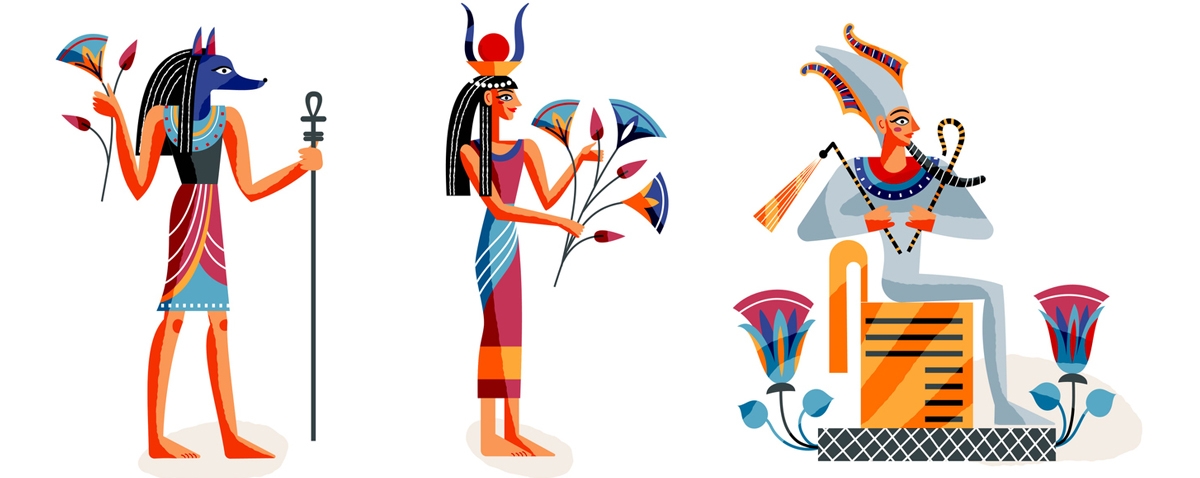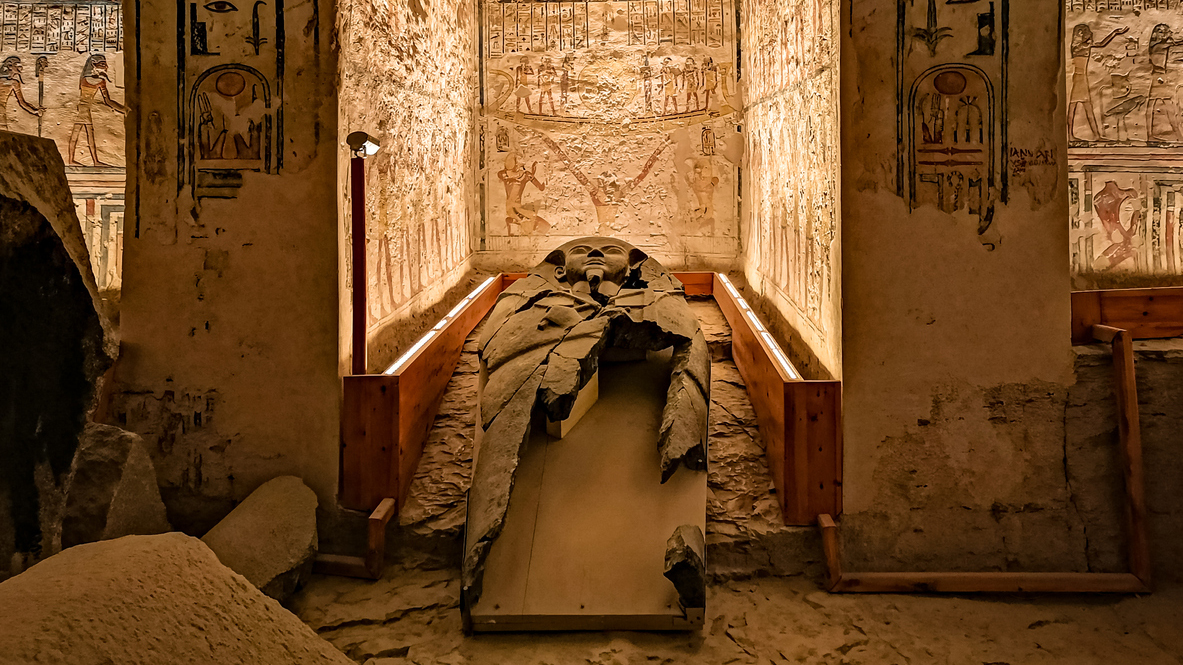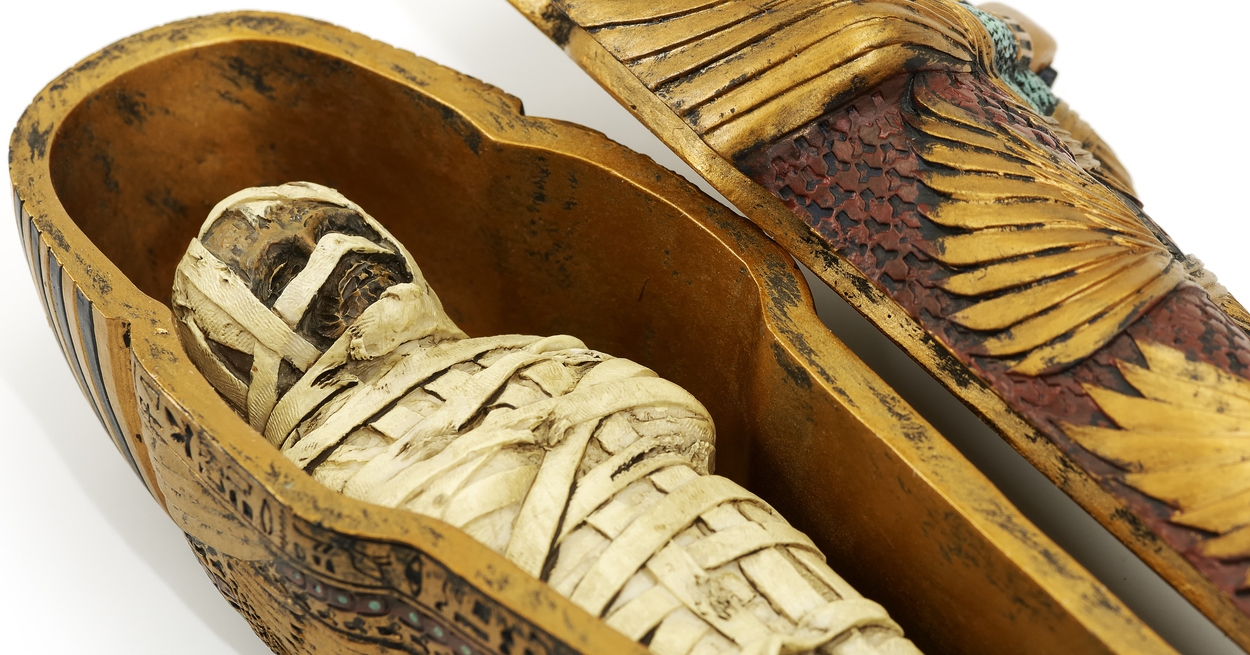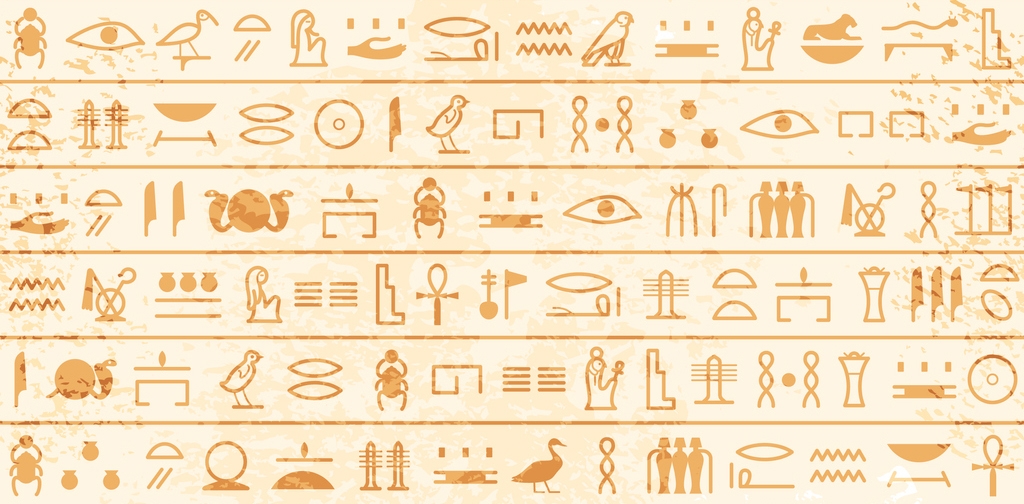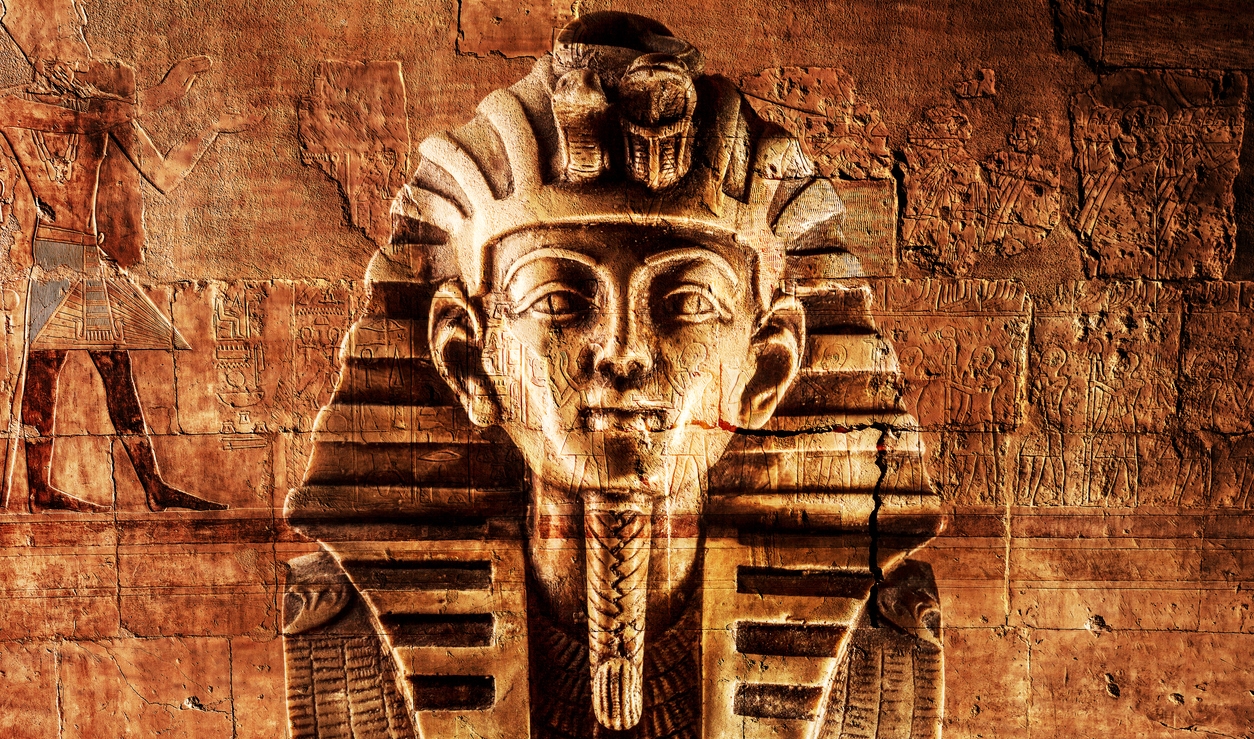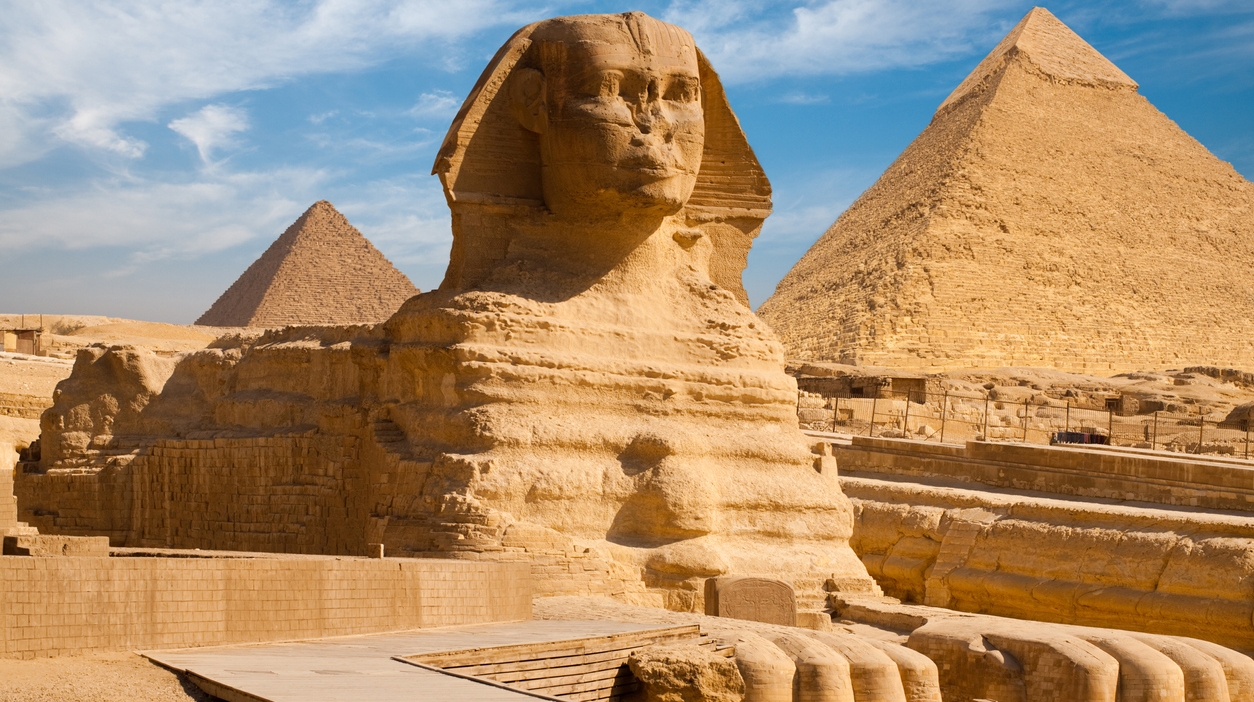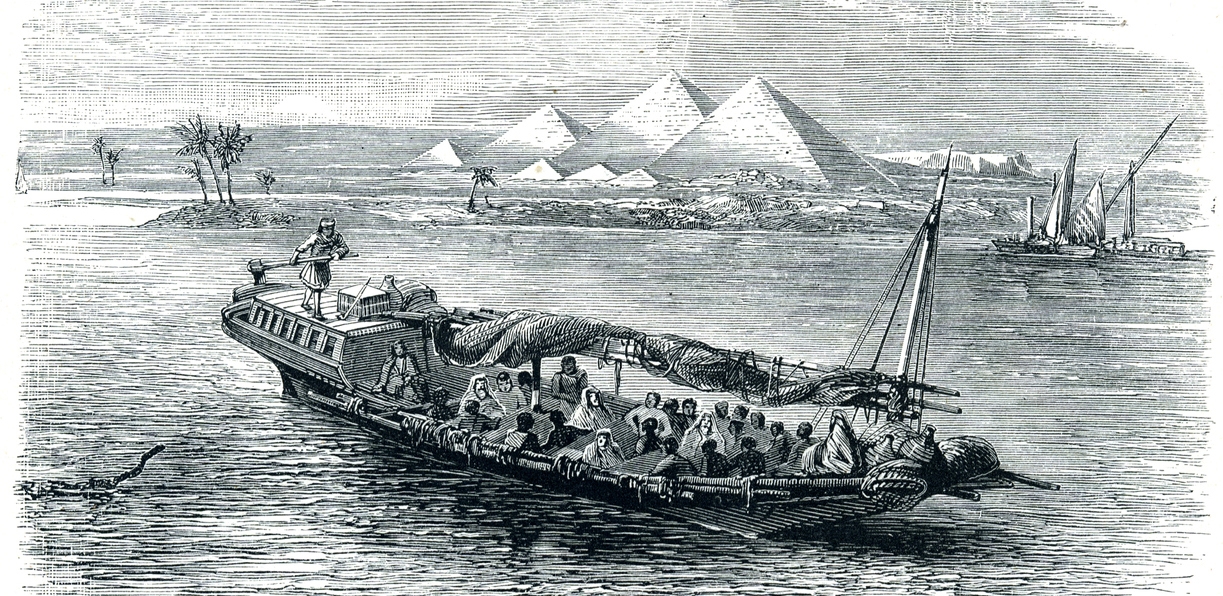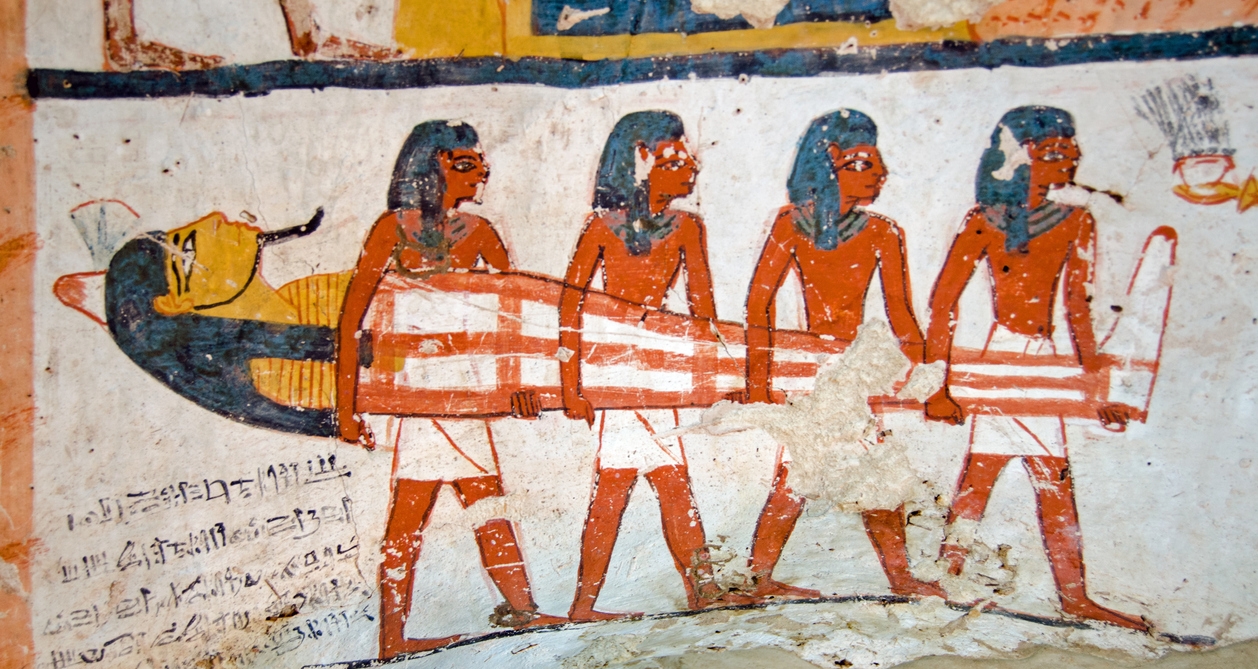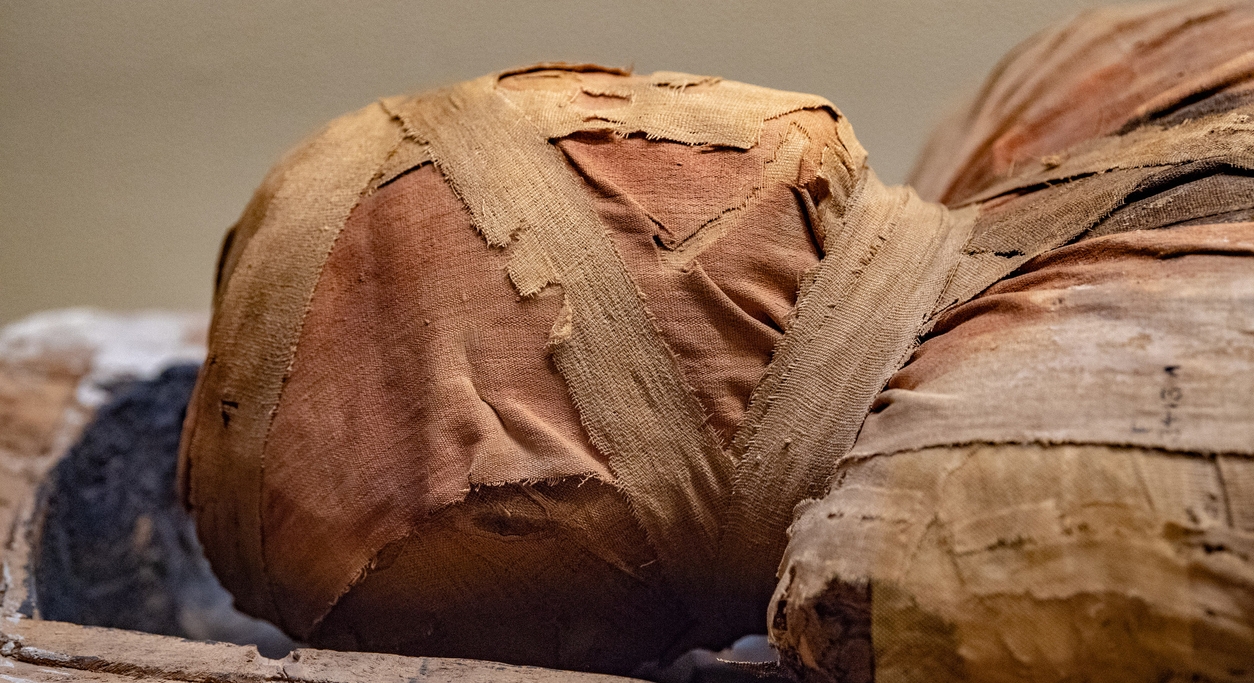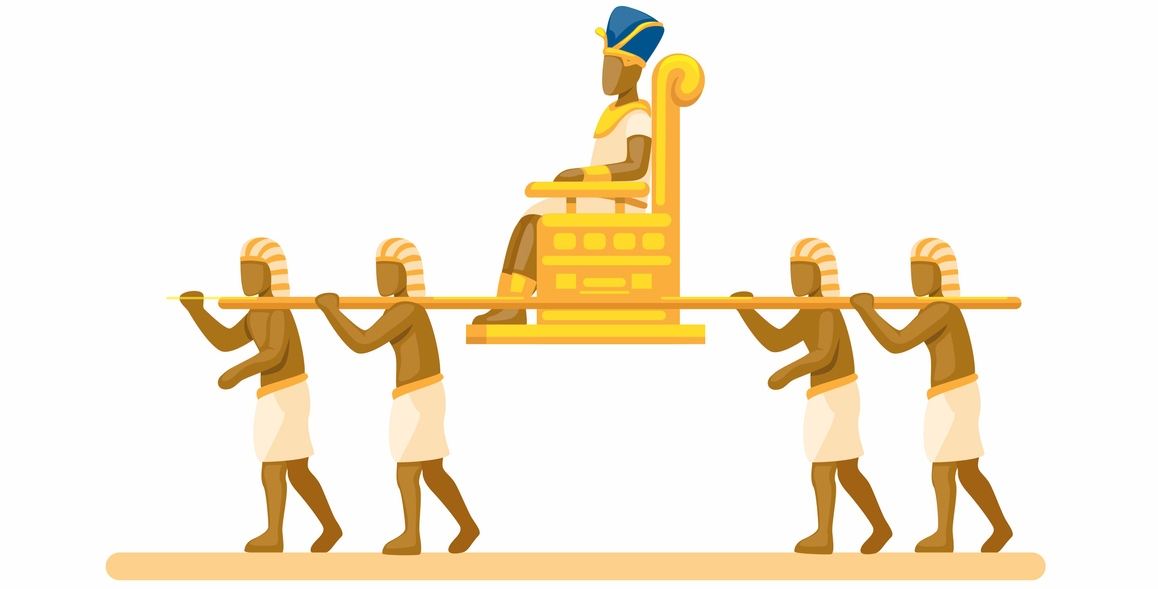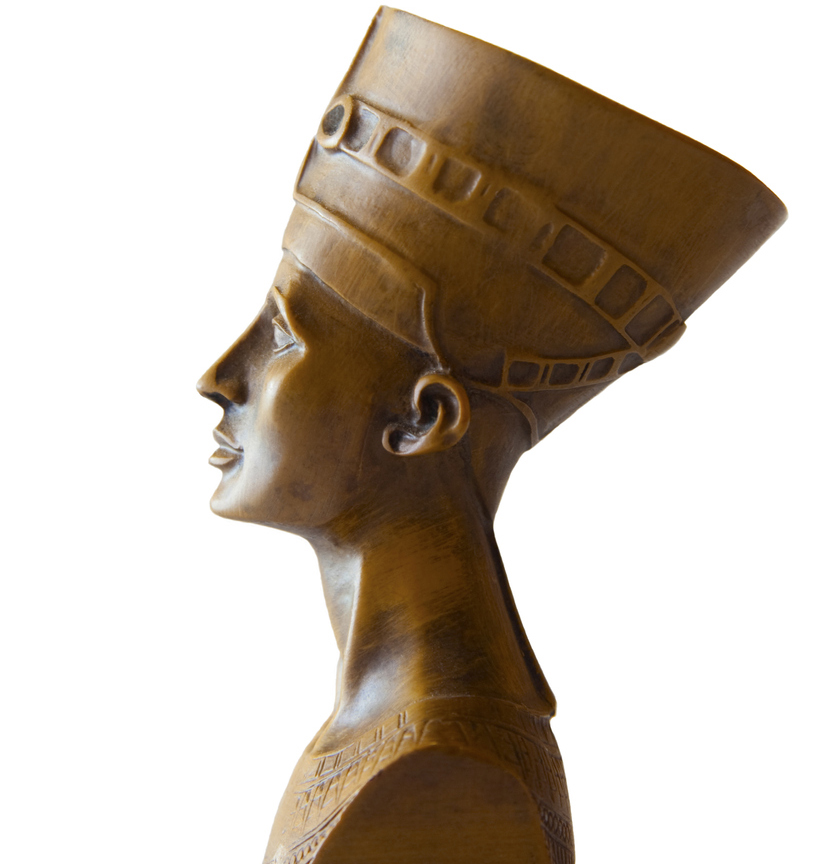Background
Beginning in the fourth millennium BCE, the ancient Egyptian civilization flourished throughout northern Africa. It can be compared to an oasis in the African desert that relied on the annual flooding of the Nile River to sustain its agricultural population. The rich floodplain of the Nile valley, where the river flows between bands of limestone hills, and the Nile delta, where it spreads into many branches north of modern-day Cairo, were the primary sources of the nation’s wealth. [1]
As new archaeological discoveries reveal more of its secrets, people’s fascination with its various accomplishments, as seen in its art and monuments, only grows. However, even if we know a good deal about Ancient Egypt and Egyptians, there are still many things that people get wrong. There are countless ways that Egypt has captured our imaginations, yet how Egypt is portrayed creatively in movies, literature, and other media has given rise to many misconceptions.
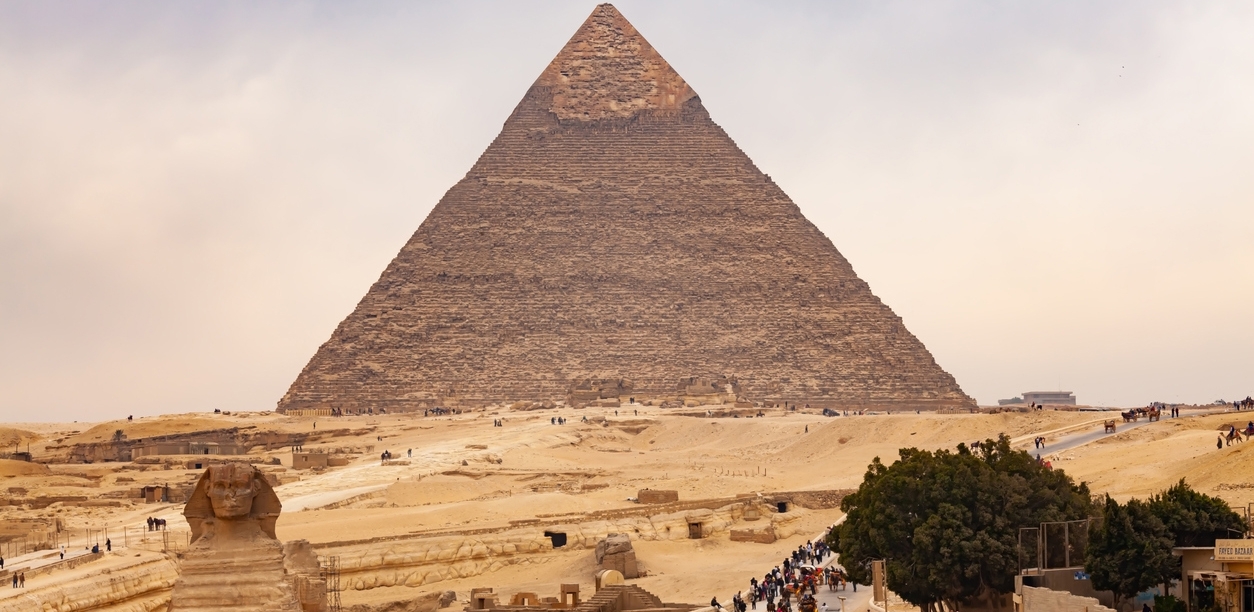
Tourists and native people at The Giza Plateau
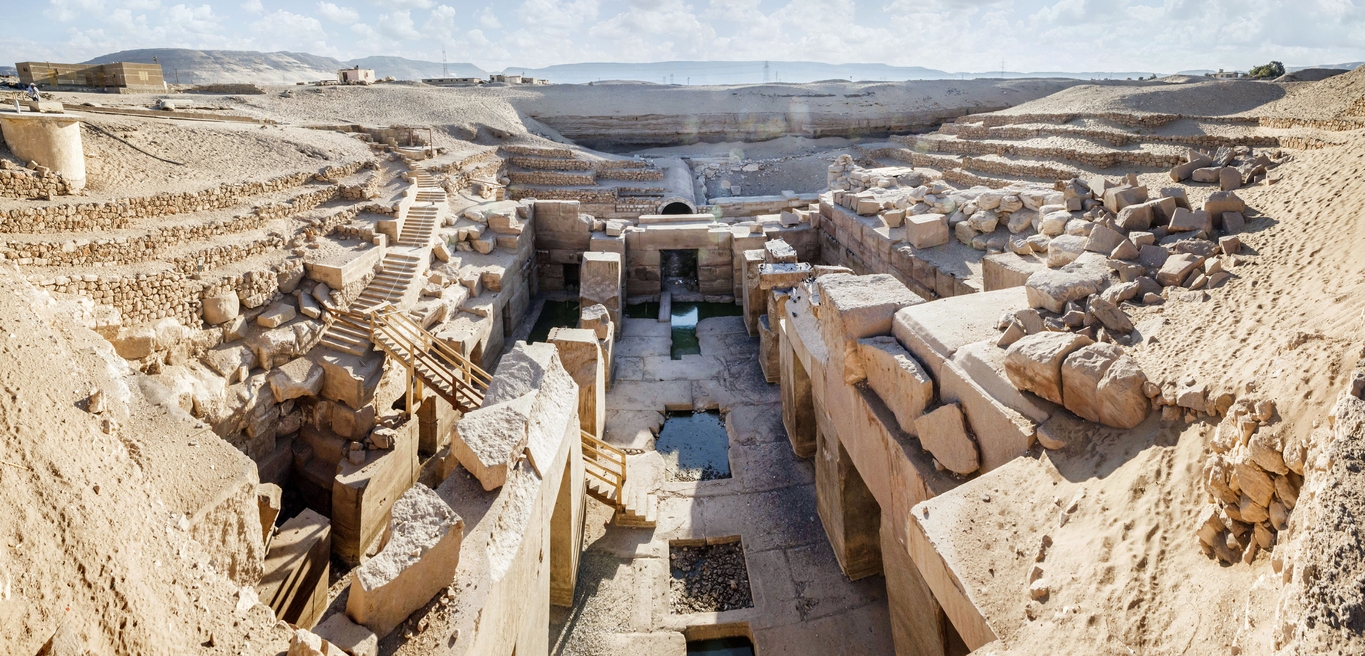
Osirion temple at Abydos, Egypt
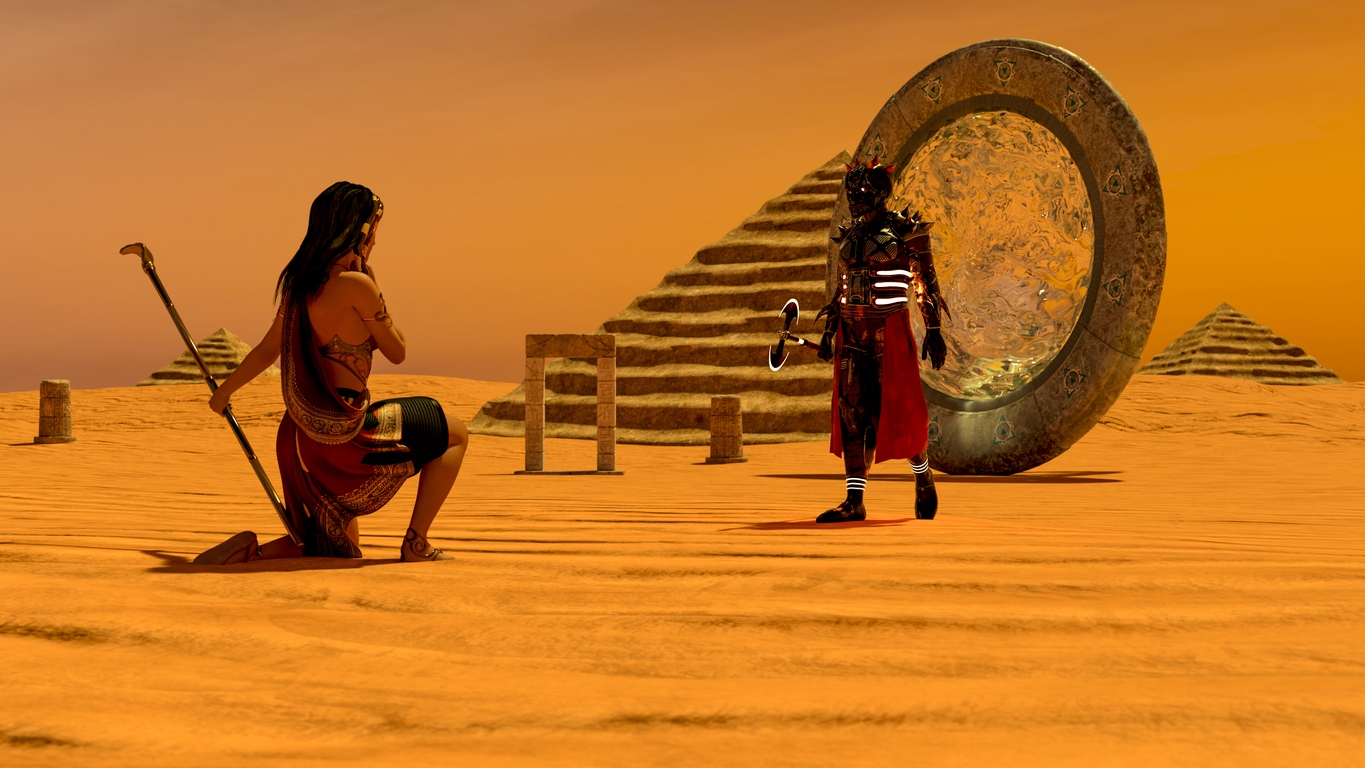
an illustration of an ancient Egyptian woman watching an alien warrior from space
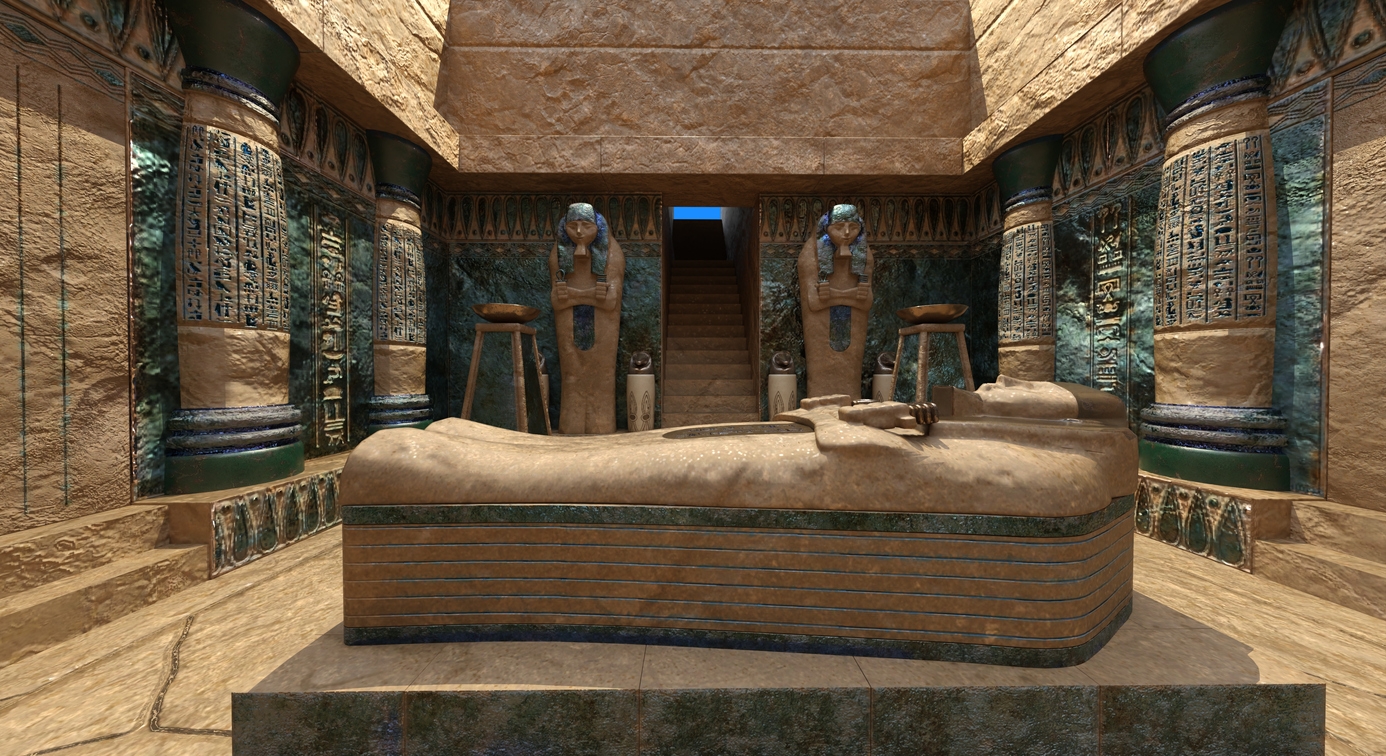
a pharaoh’s tomb
This means that much of what we think we know about Ancient Egyptians, such as popular information about pyramids and mummies, is not all true, and some of these can be blamed on outdated research and films like The Mummy and Indiana Jones. If you are curious about these, read on as we’re giving you some of the common beliefs about the Ancient Egyptians that aren’t true.
Myth #1: Slaves were forced to build the pyramids.
Pyramids first appeared in Egyptian culture in 2649 BCE, at the start of the Old Kingdom. Egyptian pyramids, which might be over 300 feet tall, were essentially enormous royal tombs. But who truly constructed these magnificent structures? Popular opinion held for a very long time that the Pyramids of Giza, in particular, were constructed by slaves. [2]
The idea has been influenced by works by the ancient Greek historian Herodotus, other written material, and Hollywood movies. However, the majority of historians and archaeologists today believe that paid workmen, not slaves, erected the Giza Pyramids.
This notion is supported by a few archeological discoveries. The tombs near the pyramids themselves, which were stocked with sustenance for the afterlife, were reserved for the burial of deceased builders. It’s implausible that slaves would be buried next to pharaohs or that they would be given such meticulous care before burial. On the Giza plateau, enormous gallery-style structures that are supposed to have acted as barracks for shifting groups of builders have also been found by archaeologists among the ruins of towns. The environment is believed to have been similar to medieval Europe, where common people served a lord in exchange for land, money, and protection. Building pyramids in ancient Egypt was probably just a regular job, like laboring on a farm during a feudal system. [2]
Myth #2: Egyptian tombs were booby-trapped.
Movies like The Mummy and Indiana Jones popularized the idea that Ancient Egyptian tombs were booby-trapped. However, this is not true. There were no enormous rolling balls, snake pits, or flesh-eating insects. [3]
To conserve the mummies and the funerary objects interred in the tombs, the ancient Egyptians took considerable care. There are tombs (and pyramids) that include one or more enormous portcullis stones that were dropped to the ground after the tomb was walled up to limit entrance to the interior areas of the tomb. It’s not as though they were placed on a trip wire to trample anyone who could have later entered the tomb.
In certain underground royal tombs, there are other objects like well-shafts or pits, but these have a religious purpose and weren’t designed to catch possible tomb raiders. Later, New Kingdom tombs were referred to them as “the hall of impediment,” and they were meant to depict Osiris-final Sokar’s resting place. [3]
Myth #3: Only rich Egyptians got mummified.
One of the most fascinating characteristics of ancient Egypt is mummification. Numerous wealthy Pharaohs were mummified using treated linens, and their brains were gently and politely extracted from their skulls through their noses or another freshly formed hole before being buried in magnificent gold coffins. The Egyptians kept their dried bodies in anticipation of an afterlife where they believed the soul would continue to exist. In contrast, commoners’ organs were chemically liquified and likely interred in shallow graves, with their relatives weeping over dirt mounds. Right? Well, this is actually wrong.
It turns out that almost anyone could practice mummification. In reality, there was a kind of mortician gold rush in ancient Egypt during the reign of King Tut, with mummy craftsmen competing for customers. Mummification was a common technique among professionals, and it wasn’t just for the wealthy. [4]
Myth #4: Hieroglyphs are ancient emojis.
We use images to communicate a great deal these days. Emojis and GIFs are frequently used in our conversations to describe our emotions, and at times it appears as though these pictures have their own language. Because of this, emojis are frequently compared to some of the oldest examples of image-based human expression. Are hieroglyphs the ancient emojis? Well, the answer to that is no.
Emojis and ancient Egyptian hieroglyphs are similar in appearance since both are graphic and rely on symbols to communicate meaning. However, Egyptian hieroglyphs have meanings that are specific, whereas emojis don’t. Each symbol in hieroglyphs corresponds to a word, phrase, or figure (e.g., Anubis). As a result, they become logographic and are not ambiguous. We all know that emojis are far more arbitrary.
Numerous symbols in hieroglyphs serve multiple purposes, including both logographic and phonographic ones. For example, a house sign can refer to both the word “house” and the sound [pr]. Hieroglyphs are significantly more accurate than emojis because of their multiple but distinct purposes, although even the Egyptians felt limited by them. The hieratic writing form was created as literacy increased, completely eliminating the pictorial component. For items like regal literature and architectural embellishment, hieroglyphs were used. [5]
Myth #5: King Tut was murdered.
Eight-year-old Tutankhamun, who later became king, was mummified and interred like other ancient kings. A group of archaeologists led by Howard Carter found his tomb near Luxor, Egypt, in 1922. It contained 5,000 objects.
While it has been widely believed that King Tut was killed, recent information has led scientists to feel otherwise. Scientists believe that King Tut most likely died from a broken leg, perhaps solving one of history’s most infamous unsolved mysteries.
The widespread belief that the Egyptian pharaoh was killed by a blow to the head more than 3,300 years ago has been debunked by a CT scan of King Tutankhamun’s mummy. An international committee of scientists believes that a thigh fracture that got septic and ultimately lethal is the most likely cause of the child king’s death at the age of 19. [6]
Myth #6: Napoleon shot the Sphinx’s nose off.
Giza is home to the renowned Sphinx. It is a single piece of sandstone that has been sculpted to resemble a cat with a human face. Its missing nose is its only significant and obvious fault, despite being in exceptionally good condition for a construction that is five millennia old. Rumor has it that during the battle, Napoleon’s troops unintentionally shot off its nose. [7] However, this is not true.
There is no truth to the historical rumor that the Sphinx’s nose was shot off with a cannon by Napoleon Bonaparte’s forces when they passed through the area in 1798. It’s because a 1737 artwork, which was completed around fifty or sixty years before Napoleon and his troops arrived, depicts the stone beast without a nose.
The tradition of the local peasants offering sacrifices to the Sphinx in order to ward off floods is supposed to have turned off Muhammad Sa’im al-Dahr, a religious fanatic, and dedicated Muslim. Al-Dahr is reported to have purposefully cut off its nose with a hammer and chisel sometime in the 14th century because he considered it to be an abominable act of idolatry. [7]
Myth #7: Ancient Egyptians despised foreigners.
Egyptian imagery frequently depicts bound, killed, and struck foreigners, adorning temple walls and ritual palettes, as well as the royal sandals and chariots. The Egyptian king’s victories over foreigners are frequently depicted in colorful, emotive, and ethnically varied scenes, which would lead an untrained observer to believe that being foreign in Egypt meant being an enemy of the state.
On the contrary, foreigners of many ethnic backgrounds lived and worked in Egypt as warriors, farmers, administrators, and priests at every point in Pharaonic history, making it a very cosmopolitan society. Even generations after their ancestors emigrated to Egypt, these people are frequently recognized by their non-Egyptian names. This demonstrates that cultural identity preservation was achievable even in Egyptian settings. In the Egyptian royal court, non-Egyptians can also be found in high-ranking roles as viziers, courtiers, and royal wives. [8]
Myth #8: Egyptians were obsessed with death.
Ancient Egypt’s reputation as a culture that was “obsessed with death” is unjustified. The truth is that the people were rather fascinated with experiencing life to the fullest. The mortuary customs that were so methodically upheld weren’t meant to celebrate or secure the continuation of life but rather to honor death. Due to the belief that after passing through death, a person’s spirit will continue to exist eternally, the deceased were interred with their belongings in gorgeous tombs and according to intricate rites. [9]
One was expected to maximize their time and take full advantage of their surroundings while they were still alive. One of the so-called Songs of the Orchard, a love ballad from the New Kingdom of Egypt, eloquently captures the perspective of the Egyptians on life. Although there are instances of bitterness and unhappiness in life, Egyptians generally love and embrace life. Despite being promised the most ideal afterlife, they did not look forward to dying or passing away since they believed they already lived in the most ideal of worlds.
The ancient Egyptians developed a culture that transformed every day into an occasion for thankfulness and divine transcendence and transformed life into an eternal journey for which one’s time in the body served as merely a temporary respite. The Egyptians genuinely appreciated their time on earth and lamented the loss of individuals who could no longer take part in the grand festival of life, far from anticipating or longing for death. [9]
Myth #9: Ancient Egyptians communicated with extraterrestrials.
Others believe that the pyramids were constructed by alien colonies or as a means of communication with them, and others see traces of alien life in ancient Egyptian art. Such theories are promoted by TV shows like “Ancient Aliens” on the History Channel in the United States with the barest of justifications.
In truth, the Egyptians were expert engineers who independently decided that constructing a large tomb in the multi-dimensional triangle shape of a pyramid was the most structurally sound option. And according to Egyptologists, there are completely reasonable explanations for occurrences of alien-like figures in artwork and murals. [10]
Myth #10: Mummies still have their hearts.
Herodotus, a renowned Greek historian, pondered on the mummification process in great detail, and one of his most well-liked theories was that mummies retain their heart function. In most cases, only the exceedingly wealthy or members of royalty were allowed to keep their hearts after passing away. [10]
Myth #11: If a Pharaoh died, so did his servants.
This myth might have been accurate in the very beginning and for a very short time. Why would pharaohs consider carrying out such a dreadful, terrifying deed?
You must keep in mind that the ancient Egyptians held a strong belief in an afterlife. Additionally, they thought that you could take items with you into the afterlife. You were the most significant person alive if you were the pharaoh. To continue living like you did in this life, you would require slaves in the afterlife. With that in mind, it’s possible that the slaves thought they were merely moving on to the next location—perhaps to a new city and home.
However, things changed quite fast. No one clearly knows why, but the practice was given up long before any of the popular pharaohs we are most familiar with came into power. However, to carry out the numerous duties necessary to maintain a palace, these later pharaohs still need attendants in the afterlife. With this, over 100 miniature carved servants were carried to the afterlife by ancient Egyptian pharaohs. They were buried in the same tombs as the Pharaohs. [11]
Myth #12: It is bad luck to open a tomb.
The discovery and initial opening of Tutankhamun’s tomb by explorer Howard Carter gave rise to this myth, which was furthered by the film “The Mummy.” Eight of the 58 members of Carter’s team passed away within a decade of discovering the tomb, leading many to believe it was cursed.
Although the hypothesis that the fungus on the tomb’s walls may have contributed to a few of the fatalities has some validity, the majority of them are accidental and would have happened even if they had not entered the tomb. [10]
Myth #13: Cleopatra was Egyptian.
Although Cleopatra was born in Egypt, she was descended from Ptolemy I Soter, an Alexander the Great general, and Macedonian Greece. After Alexander’s demise in 323 B.C., Ptolemy took control of Egypt and began a nearly three-century-long dynasty of Greek-speaking kings. Despite not being of Egyptian descent, Cleopatra adopted many of the country’s traditional practices and was the first Ptolemaic ancestor to master the language. [12]
Myth #14: Ancient Egyptians are the same as modern Egyptians.
The population of Egypt now is thought to be identical to that of antiquity. The current populace, however, is a reflection of the entrance of several peoples, including the Assyrians, Persians, Greeks, Romans, Arabs, and Turks, through migration, occupation, and conquest. Of course, there are living descendants of the ancient Egyptians, but it would be absurd to draw conclusions from the present-day population alone, such as “there were no Nubians in ancient Egypt.” [10]
Myth #15: Ancient Egyptians practiced human sacrifice.
Human sacrifice has been a topic of modern imagination for a number of centuries at this point. The numerous subsidiary burials found around the First Dynasty monarchs’ royal tombs at Abydos have led some historians to hypothesize an early type of retainer sacrifice. For instance, Djer’s tomb was surrounded by more than 300 graves! The numerous stelae bearing their names and positions that have been erected next to their burial allow us to recognize them as officials, priests, and retainers.
The real remains of persons buried in these sites are frequently in a fragmented state when examined since the tombs have been pillaged and looted. There were tombs from earlier in the Predynastic Period that demonstrate the deliberate dissection of the remains, including one where the victim’s throat was cut before their head was severed.
There are just a few examples at Abydos where a deeper look reveals more information, but there is no evidence that these people were buried alive. The First Dynasty evidence of extensive subsidiary graves at Abydos is unique. However, the practice was not carried on throughout any other era of Egyptian history. [13]
Conclusion
Ancient Egyptian culture is indeed fascinating to travelers. It is among the things that draw millions of travelers to the country each year. But it is also interesting to learn that not all the things that we believe about Ancient Egyptians are true, such as who really built the pyramids, the story behind the Sphinx’s nose, and more that we’ve mentioned in this post. But aside from these popular myths, there are many more facts that you can learn about Ancient Egypt by checking out our Timeline for the Ancient Egyptian Empire.
Learning these truths can help us in spreading facts instead of wrong information to many people. There are a lot of myths and misconceptions out there that need to be cleared up. That is why it is important to always check your sources and do thorough research to get the right information that you need on certain topics. Steer away from outdated sources and be careful when getting information online. We hope this post helped you learn more about the common beliefs about the Ancient Egyptians that are not true.
References
[1] Dorman, P. F. (2022, March 7). Ancient Egypt. Encyclopædia Britannica. Retrieved August 16, 2022, from https://www.britannica.com/place/ancient-Egypt
[2] Encyclopædia Britannica, E. (2022). No, enslaved people didn’t build the pyramids of Giza. Encyclopædia Britannica. Retrieved August 16, 2022, from https://www.britannica.com/video/226777/did-enslaved-people-build-the-pyramids
[3] The Artifact Lab, E. (2013). Questions about Ancient Egypt and mummies. In the artifact lab. Retrieved August 16, 2022, from https://www.penn.museum/sites/artifactlab/sample-page
[4] Rossen, J. (2022, February 21). 6 misconceptions about ancient Egypt. Mental Floss. Retrieved August 16, 2022, from https://www.mentalfloss.com/article/655431/ancient-egypt-misconceptions
[5] Tremeer, E. (2019, January 2). Are emojis the new hieroglyphs? A brief history of emojis and their purpose. Babbel Magazine. Retrieved August 16, 2022, from https://www.babbel.com/en/magazine/are-emojis-hieroglyphs
[6] Lovgren, S. (2021, May 3). King tut died from broken leg, not murder, scientists conclude. History. Retrieved August 16, 2022, from https://www.nationalgeographic.com/history/article/king-tut-died-from-broken-leg–not-murder–scientists-conclude
[7] Grunge, S. (2021, May 17). Lies you learned in history class. Grunge.com. Retrieved August 16, 2022, from https://www.grunge.com/10181/historical-events-basically-lies/
[8] The Nile Scribes, E. (2019, April 20). Common misconceptions about ancient Egypt. Nile Scribes. Retrieved August 16, 2022, from https://nilescribes.org/2019/04/13/common-misconceptions-egypt/
[9] Mark, J. J. (2022, August 14). Death in ancient Egypt. World History Encyclopedia. Retrieved August 16, 2022, from https://www.worldhistory.org/article/1050/death-in-ancient-egypt
[10] Austin, J. (2019, January 4). 15 myths about ancient Egypt, debunked. AFKTravel. Retrieved August 16, 2022, from https://afktravel.com/57153/10-myths-about-ancient-egypt-debunked/
[11] Peters, S. (2020, August 8). True or false: Pharaohs took servants to grave? KidsAncientEgypt.com. Retrieved August 16, 2022, from https://www.egyptabout.com/2012/05/pharaohs-took-servants-to-afterlife.html
[12] Andrews, E. (2015, August 12). 10 little-known facts about cleopatra. History.com. Retrieved August 16, 2022, from https://www.history.com/news/10-little-known-facts-about-cleopatra

